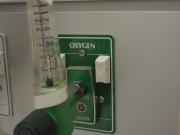Gas and Vacuum Systems for Laboratory and Healthcare Facilities
This topic includes information related to gas and vacuum systems that are installed in laboratory and healthcare facilities during construction. Gas and vacuum systems deliver compressed air, gas and processed water to point of use locations within a facility. They also serve to remove or dispose of general wastewater, chemical waste and vapors.
